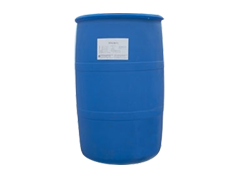The synthesis of polymer surfactants has become one of the hot topics in the synthesis of surfactants in recent years. However, there is still a lot of basic work to be further studied in the continuous development of new products and the exploration of the relationship between their structure and performance. Therefore, studying the relationship between its structure and properties, paying attention to the research and development of new polymer surfactants, and synthesizing polymers with high molecular weight and high surface activity have important theoretical and application value. In addition, the development of low-cost, non-toxic, pollution-free and multi effect polymer surfactants will be the research trend of polymer surfactants in the future.

It is found that it has a certain effect on preventing the white ground contamination of printed fabrics, and can effectively remove the floating dye after reactive dye dyeing and improve the soaping effect after reactive dye dyeing.
In addition, the composite system of polyoxyethylene alkyl amine and anionic surfactant can be used to replace imported products for acrylic fiber dyeing production. For example, when quaternary ammonium salt, fatty alcohol polyoxyethylene ether and alkyl amine polyoxyethylene butyl ether are combined, the dyeing uptake of acrylic fiber is high and the leveling effect is good.
In addition, Zhou Cun and others prepared high molecular surfactant tfx-200 acrylic fiber polymer granulator with high molecular weight polyether, fatty acid ester and ammonium phosphate as main raw materials and added special penetrant, water reducer, release agent, curing agent and coagulant. It was found that the surfactant has excellent application performance, In China, some dry acrylic fiber production plants and wet acrylic fiber production plants have been industrialized for a long time.
In the textile industry, surfactants can be used not only as cleaning agent, scouring agent, emulsifier, leveling agent, softener, antistatic agent and waterproof agent, but also as penetrant, defoamer, smoothing agent, color fixing agent, dispersant, etc. Among them, the oil agents used in the textile industry often involve surfactants, mostly anionic and non-ionic surfactants.